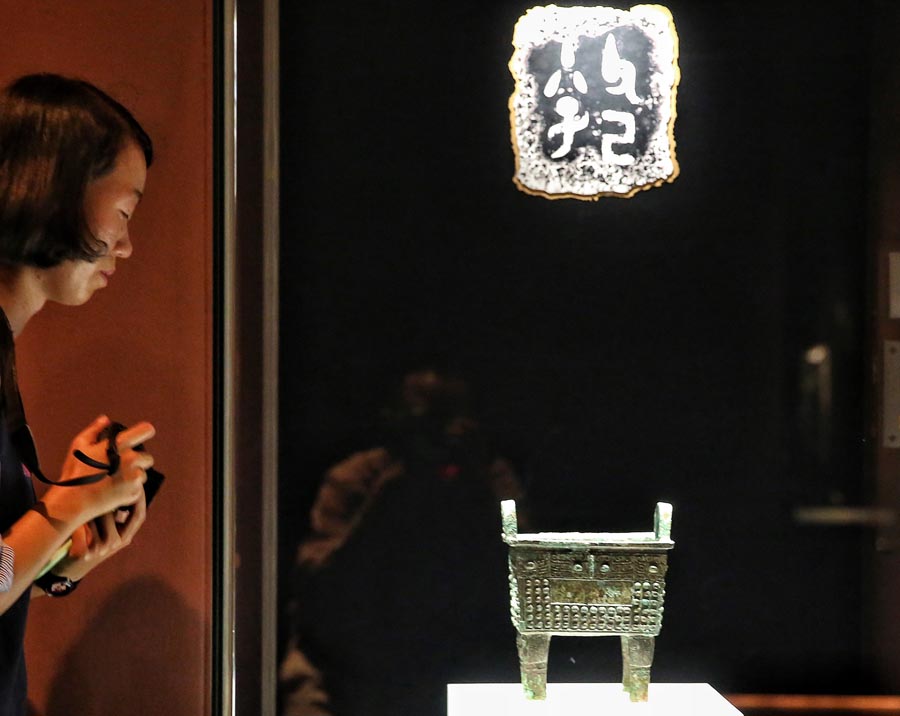 |
|
A Shang Dynasty (c. 16th century-11th century BC) square ding vessel is on show at an ongoing exhibition at the National Museum of China. [PHOTO BY JIANG DONG/CHINA DAILY] |
An exhibition at the National Museum is presenting China's ancient writing system on oracle bones to a wider contemporary audience, Lin Qi reports.
Late Chinese-French artist Zao Wou-ki said in the early 1950s that while Paris had an undeniable artistic influence on his work, he had also been gradually rediscovering China.
At that time, Zao had been living in the French capital for a few years after moving from Hangzhou, Zhejiang province, where he taught at the China Academy of Art. While he was in awe of the vanguard of art movements prevailing in Europe, he was also inspired to return to his cultural roots.
"China is inherent in all my recent canvases. Paradoxically, it is to Paris that I owe this return to my profound origins," Zao said.
Specifically, he was referring to Chinese calligraphy and oraclebone scripts, the earliest known form of Chinese writing that dates back 3,000 years.
Zao's father, a wealthy banker and collector of antiques and works of art, accumulated an assembly of oracle bones bearing inscriptions, and his meticulous study of them nurtured his son's early interest in these primitive characters of China.
Zao introduced the simple, clear forms of these petroglyphs into his paintings to develop his oeuvre.